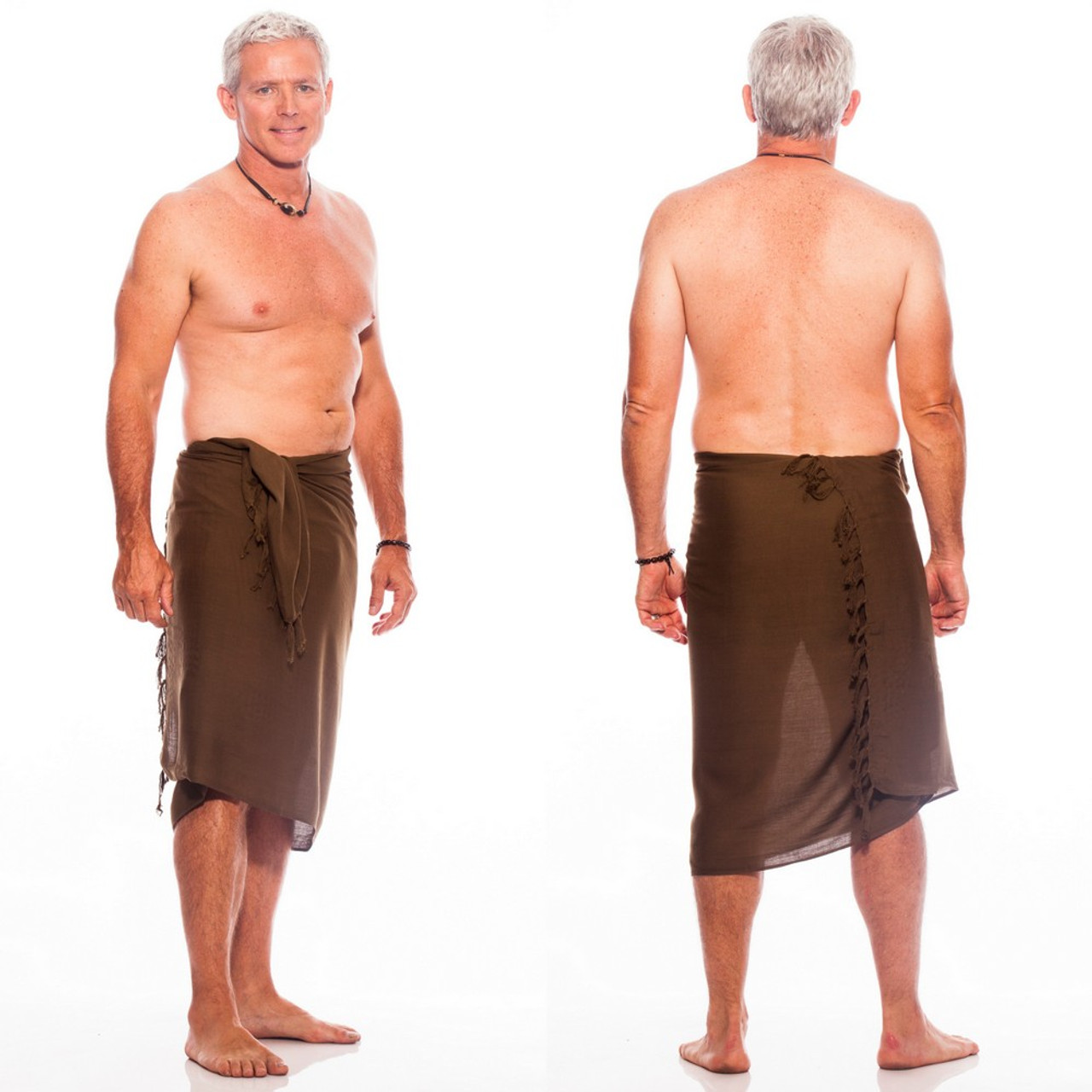The History and Symbolism of the Sarong
A sarong is a large tube of fabric that is usually wrapped around the waist and worn for many different purposes. It is traditionally worn in Southeast and South Asia, as well as in East and West Africa and many Pacific islands. Explore the rich traditions and Culture in surrounding this iconic garment to learn about the history of the sarong and its many fascinating uses across different regions.
Sarong’s Symbolism
The sarong sarong has a rich history and is a powerful symbol in many Asian cultures. It has been used to represent the rights of minority groups and to protest oppressive systems. It has also evolved over the years into a global fashion trend. Let’s explore some of the symbols that are often associated with sarongs, and how they evolved over time.
It is most familiar to the American public due to its association with South Seas films. The most famous actress to be linked with this garment was Dorothy Lamour, who starred in several films of the genre. While not the first female to wear a Ikat cloth, Lamour had an extensive filmography and was often referred to as the “Sarong Girl” in the press.
In many cultures, the sarong wrap also represents modesty, comfort, and artistic expression. Every fold or pattern tells a cultural story from the hand-dyed batik prints of Indonesia to the floral patterns of Polynesian pareos. The sarong is not just a piece of fabric; it’s a cultural identity that connects generations.
Sarong Uses
The sarong sarong is a versatile garment with a long history. Historically, the Kain was worn by royalty in the South Pacific, as well as by many native communities throughout Southeast Asia. Today, sarongs are available in a wide variety of fabrics and designs.
The sarong is commonly worn by both men and women. In Indonesia, the sarong is a traditional costume. Indonesian women wear sarongs dyed with the batik method. While batik sarongs are usually reserved for formal occasions, they are also used for everyday purposes.
In modern fashion, sarong skirts have become a summer essential, especially at beaches and resorts. Many travelers visiting Blind Creek Beach love pairing their swimsuits with vibrant sarong wraps, using them as stylish beach cover-ups or breezy accessories. Designers have also incorporated sarong-inspired styles into resort wear, making it a global trend seen from tropical islands to luxury coastal destinations.
Beyond clothing, sarongs serve multiple practical uses as curtains, tablecloths, picnic blankets, or even as baby carriers in traditional communities. This versatility continues to make sarongs one of the most beloved fabrics across the world.
Sarong History
The sarong has a long history, stretching back to pre-colonial times. It has been worn by ethnic groups to show their independence and to challenge oppressive systems. Through the centuries, its symbolism has grown from its origin in Asia to the global fashion trends of today. But before we learn more about its rich history, let’s take a look at the garment’s significance.
Throughout history, it has gone by different names. The South Pacific islanders call it “pareos”; Southeast Asian countries call it “surong,” and Africans refer to it as a “kanga.” The sarong is widely worn in the Arab peninsula and Indonesia.
Over time, trade and migration spread the sarong wrap across continents. Merchants carried it from the Indian Ocean to the Pacific Islands, where each region added its own touch geometric patterns, floral motifs, or tribal symbols. The sarong became a form of communication, reflecting status, tribe, and heritage.

Its Fabric
The fabric of a scarf wrap is a symbol of Asian cultures. Since pre-colonial times, sarongs have represented both cultural pride and resistance. While now viewed as a luxury garment, their symbolism goes far beyond style.
If you’ve ever wondered what is a sarong and why it holds such cultural value, it’s more than just a piece of fabric. A sarong is a long, wide, tube-like cloth that wraps around the body. It usually measures between one and two and a half yards in length. Traditionally, it’s tied around the waist, and the center of the sheet is woven with a contrasting fabric known as the kepala, or “head” of the sarong.
Today, the sarong skirt is crafted from materials like silk, cotton, rayon, and chiffon for a breezy, modern look. Some handmade sarongs still feature intricate batik designs that take weeks to create a true testament to craftsmanship passed down through generations.
Its Style
While the sarong’s traditional use dates back to ancient times, it has gained contemporary popularity for swimsuit covers and other casual wear. The traditional Cultural cloth is often made of cotton, silk, or rayon. Its flexibility allows it to be used as a blanket, sash, or jacket. Decorative panels can be made to contrast with the Wrap skirt’s main fabric.
In modern days it is available in a wide range of colours and patterns, which make it the perfect summer-time garment. Moreover, it can be worn for beach visits, weddings, cocktail parties, and more. Most sarongs are designed with a back zipper for easy access and comfort. They are often made from cotton material and come in bright colours. People style sarongs in many ways as skirts, dresses, or tops. Influencers have turned them into a travel and resort fashion essential.
Its Color
When purchasing a sarong, the color of the fabric is the most important thing to consider. If you’re looking for a colorful, vibrant Beach wrap, you’ll need to know what shade to go for. The color of the fabric will determine how it feels to wear.
In Malaysia, sarongs are known by different names. In addition to sabok and tapeh, it is also called kain, a word paired with specific words that describe different types of sarong. For example, kain pelikat means a sarong with a striped design. Kain tenun, on the other hand, is woven and has batik motifs. These types of sarongs are worn by men. The sarong is typically made of cotton, but there are now polyester, nylon, silk, and other fabrics.
Color plays a cultural role too in Bali, for example, specific sarongs are worn during religious ceremonies based on color symbolism. Black-and-white checkered sarongs represent balance, while bright floral ones reflect joy and celebration.
Conclusion: The Global Appeal of the Sarong
From its ancient roots to its place in modern wardrobes, the sarong continues to symbolize culture, versatility, and style. A traditional sarong wrap suits cultural events, while a breezy sarong skirt is perfect for the beach. This timeless garment connects people through heritage and style.
At The Tourists World, we celebrate the beauty of global traditions and the sarong perfectly embodies that connection between travel, culture, and timeless elegance.
FAQs About Sarongs
1. What is a sarong?
A sarong is a large rectangular or tube-like cloth wrapped around the waist and worn in many cultures across Asia and the Pacific. Today, it’s also used as a sarong wrap or sarong skirt for beachwear, casual outings, and cultural events.
2. How to tie a sarong in martial arts?
In martial arts like Silat, a sarong is tied around the waist by wrapping it firmly and knotting it at the side or back. It allows free movement and symbolizes tradition, discipline, and respect.
3. What is the difference between a sarong and a sarong skirt?
A sarong is a free piece of fabric that can be tied in different styles, while a sarong skirt is a pre-stitched version with a zipper or elastic waist, designed for convenience and easy wear.
4. Can men wear sarongs?
Yes, men commonly wear sarongs in many countries like Indonesia, Malaysia, and Sri Lanka. Men’s sarongs are often striped or checked and used for ceremonies, daily wear, or relaxation.
5. What fabric is best for a sarong wrap?
Lightweight fabrics like cotton, rayon, and chiffon are ideal for sarong wraps, while silk or batik materials are preferred for traditional or formal occasions.






